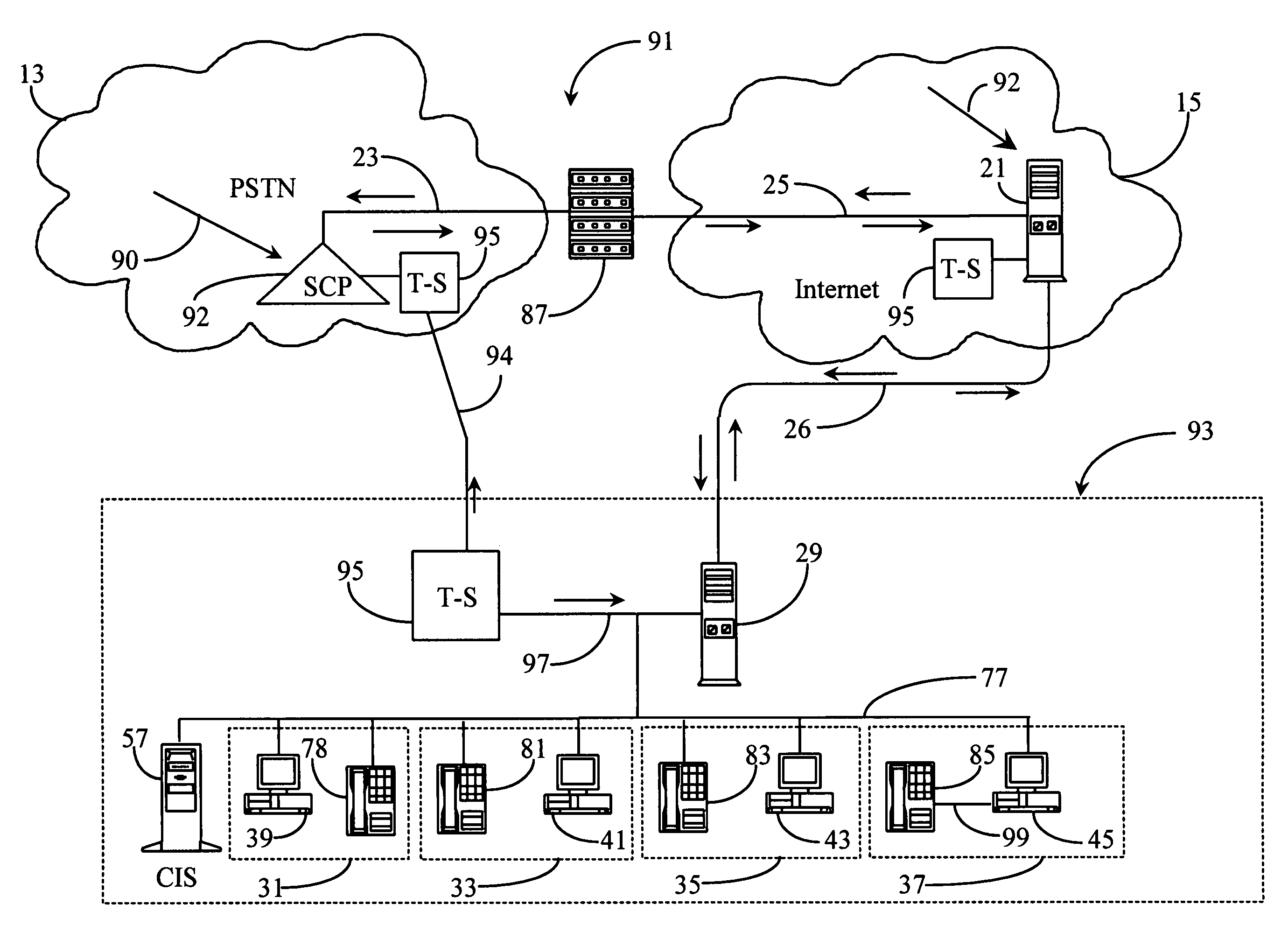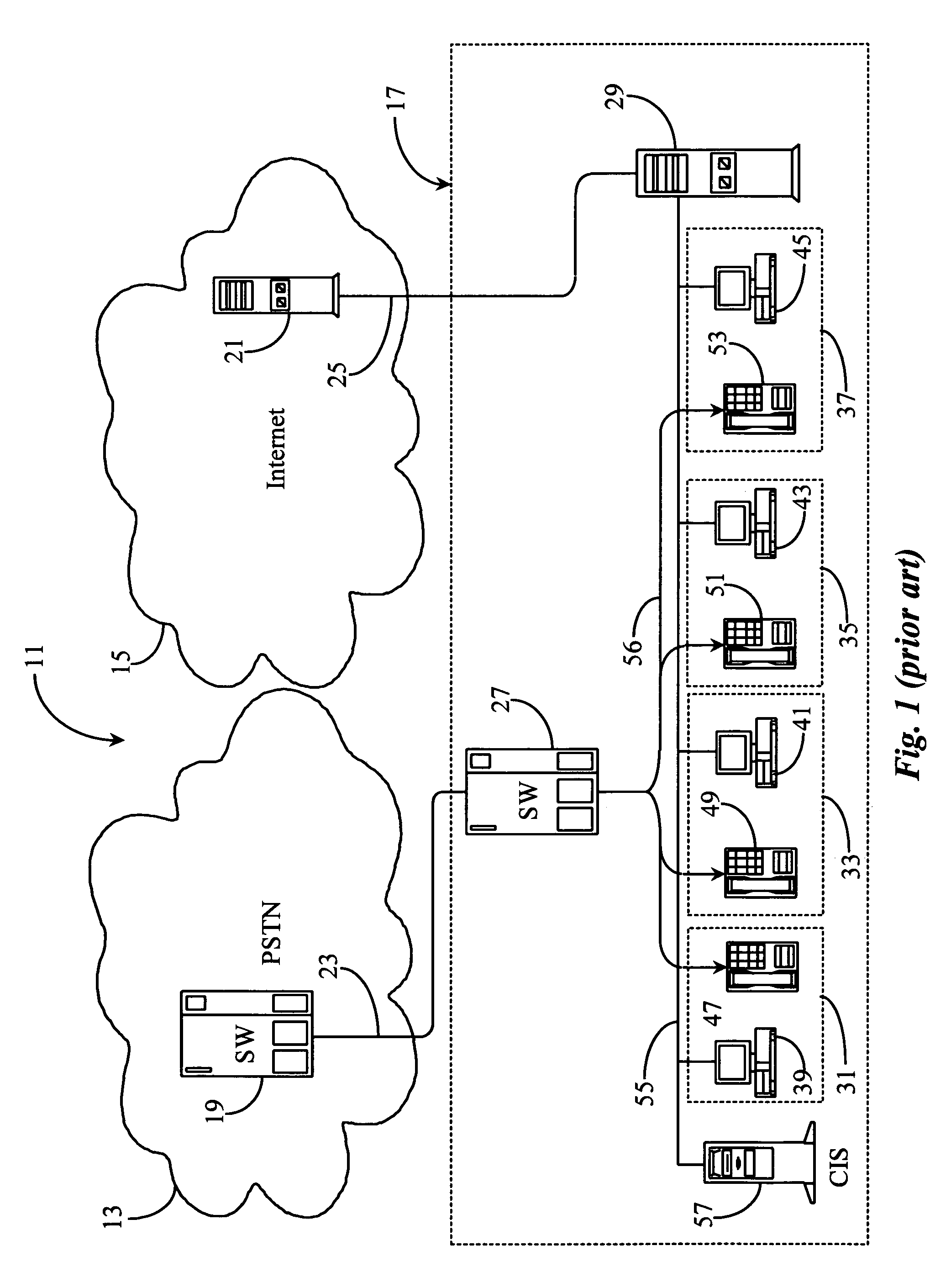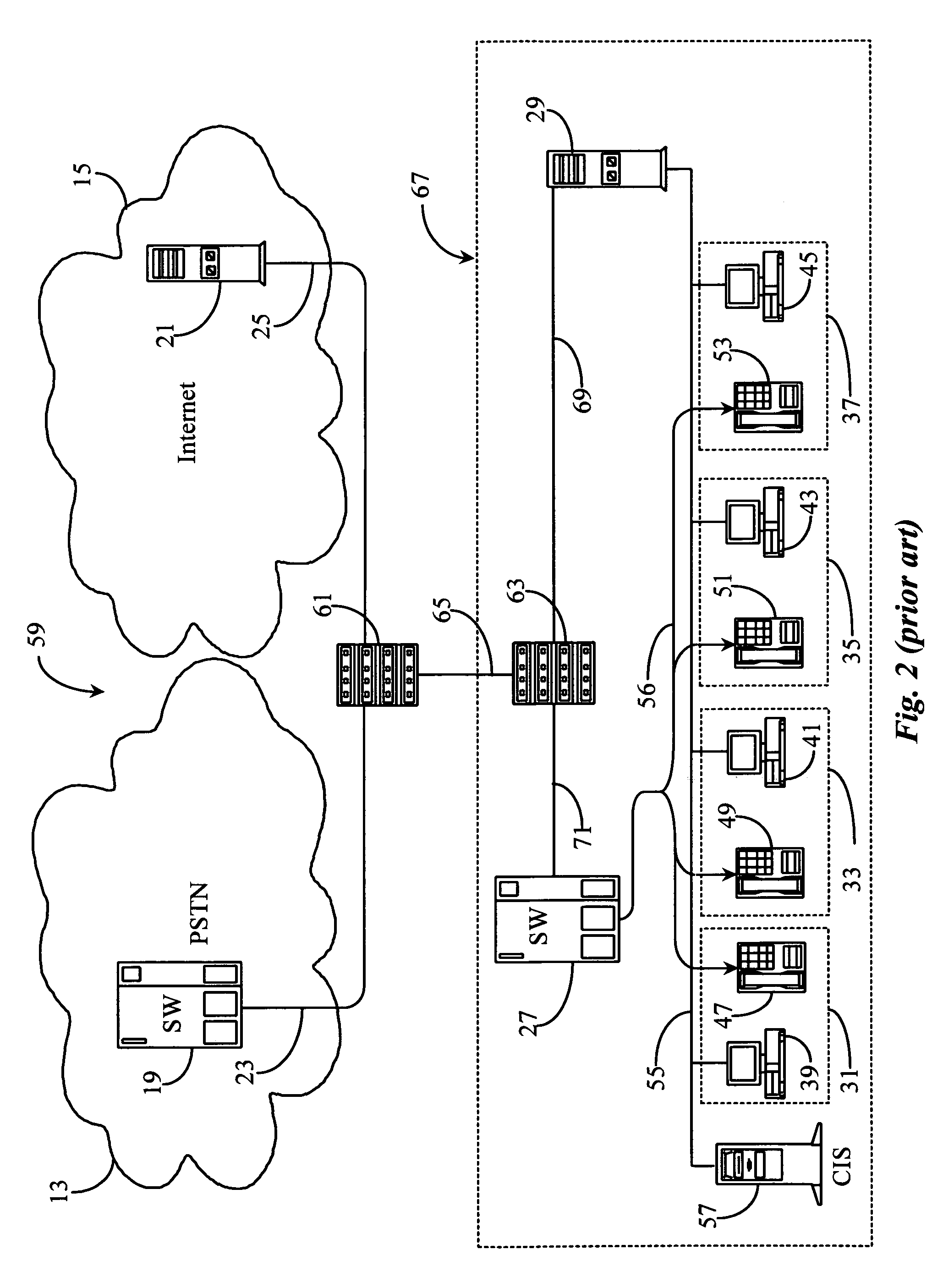Using XML expressed primitives for platform and system-independent call modeling
a platform and system-independent call modeling technology, applied in the field of telephony technology, can solve the problems of adherence not producing seamless inter-operability, and reducing the number of calls
- Summary
- Abstract
- Description
- Claims
- Application Information
AI Technical Summary
Benefits of technology
Problems solved by technology
Method used
Image
Examples
Embodiment Construction
[0043]FIG. 1 is a system diagram of a prior art call center and network connections, wherein the call center is capable of both COST and IPNT call handling. In FIG. 1 telecommunications network 11 comprises a publicly switched telephone network (PSTN) 13, the Internet network 15, and a call center 17. PSTN network 13 may be a private network rather than a public network, and Internet 15 may be another public or a private data network as are known in the art.
[0044]In this basic prior art example, call center 17 is equipped to handle both COST calls and IPNT calls. Both COST calls and IPNT calls are delivered to call-center 17 by separate network connections. For example, a telephony switch 19 in the PSTN may receive incoming telephone calls and rout them over a COST network connection 23 to a central switching apparatus 27 located within call center 17. IPNT calls via Internet 15 are routed via a data router 21 over a data-network connection 25 to an IPNT router 29 within call center...
PUM
 Login to View More
Login to View More Abstract
Description
Claims
Application Information
 Login to View More
Login to View More - R&D
- Intellectual Property
- Life Sciences
- Materials
- Tech Scout
- Unparalleled Data Quality
- Higher Quality Content
- 60% Fewer Hallucinations
Browse by: Latest US Patents, China's latest patents, Technical Efficacy Thesaurus, Application Domain, Technology Topic, Popular Technical Reports.
© 2025 PatSnap. All rights reserved.Legal|Privacy policy|Modern Slavery Act Transparency Statement|Sitemap|About US| Contact US: help@patsnap.com



